Wushan Epimedium Epimedium wushanense 'Caramel'

ABOUT
'Caramel' is a cultivar of the commonly known Bishop's hat, a plant known for its attractive foliage and flowers. This particular variety features leaves that emerge with a caramel hue, developing into a mix of green and bronze as they mature. The leaves are heart-shaped with a slightly spiny texture, giving them a delicate yet robust appearance. In the spring, the Bishop's hat produces sprays of delicate, nodding flowers. These flowers are small, with four-petals that tend to be a mix of yellow and red tones, creating an eye-catching contrast with the caramel-colored new foliage. As a perennial, the Bishop's hat undergoes seasonal changes but retains its distinctly shaped leaves throughout the growing season.
About this plant
 Names
NamesFamily
Berberidaceae
Synonyms
Caramel Fairy Wings, Caramel Barrenwort
Common names
Epimedium wushanense 'Caramel'.
 Toxicity
ToxicityTo humans
The Epimedium, commonly known as horny goat weed, is not considered toxic to humans. Ingesting this plant typically does not lead to serious poisoning or life-threatening symptoms. It is actually used in traditional medicine for various purposes. However, as with any plant, individual allergic reactions or sensitivities to this plant can occur.
To pets
Horny goat weed is not generally known to be toxic to pets. This means that ingestion of the plant by cats, dogs, or other domestic animals should not typically result in severe or life-threatening symptoms of poisoning. But just like with humans, individual pets may have allergies or sensitivities to certain plants, and care should be taken to ensure pets do not consume large quantities of any non-food plants.
 Characteristics
CharacteristicsLife cycle
Perennials
Foliage type
Semi-deciduous
Color of leaves
Caramel
Flower color
Yellow
Height
1-2 feet (30-60 cm)
Spread
1-2 feet (30-60 cm)
Plant type
Herb
Hardiness zones
5
Native area
China
Benefits
 General Benefits
General Benefits- Aesthetic Appeal: Epimedium wushanense 'Caramel', commonly known as Wushan Fairy Wings, features attractive foliage often used to enhance the visual appeal of gardens.
- Shade Tolerance: This variety is capable of thriving in partially shaded areas where other plants might struggle.
- Drought Resistance: Once established, Wushan Fairy Wings is able to withstand periods without abundant water.
- Ground Cover: It provides excellent ground cover, suppressing weeds and protecting the soil from erosion.
- Cold Hardy: The plant can survive in cooler climates, making it versatile for various garden zones.
- Low Maintenance: It generally requires minimal care after it has established, making it ideal for gardeners looking for plants that do not need constant attention.
- Attracts Pollinators: The flowers of Wushan Fairy Wings attract bees and butterflies, helping to pollinate the garden.
- Deer Resistance: The plant is known to be less palatable to deer, which helps to keep the foliage intact in areas with deer populations.
 Medical Properties
Medical Properties- Epimedium wushanense 'Caramel', commonly known as 'Caramel Fairy Wings', has been used in traditional Chinese medicine.
- It is said to have aphrodisiac properties and has been used to improve sexual function.
- The plant contains icariin, which is thought to have potential benefits for bone health and may help prevent osteoporosis.
- It may have anti-inflammatory effects and could be used to relieve arthritis and rheumatic pain.
- Some sources suggest it may have neuroprotective properties and could be beneficial in preventing cognitive decline.
 Air-purifying Qualities
Air-purifying QualitiesThis plant is not specifically known for air purifying qualities.
 Other Uses
Other Uses- Ground cover: Epimedium wushanense 'Caramel', also known as Bishop's hat, can provide dense ground coverage in shade gardens, suppressing weeds with its foliage.
- Ornamental value: With its attractive, heart-shaped leaves and caramel-colored flowers, it is often used to enhance the aesthetic of woodland settings.
- Fauna habitat: The dense cover of Bishop's hat can provide a safe habitat for small wildlife, including beneficial insects and ground-nesting birds.
- Erosion control: Planting this species on slopes can help stabilize soil and prevent erosion due to its root system.
- Leaf litter: Its deciduous nature ensures the provision of organic matter as leaf litter, which enriches the soil as it decomposes.
- Container gardening: Due to its compact size, E. wushanense 'Caramel' can be grown in pots or containers for patios and balcony gardens.
- Seasonal interest: The leaves often change color in the fall, providing additional seasonal interest in the garden beyond the flowering period.
- Edging plant: Its mounding habit and decorative foliage make it suitable for use as an edging plant along paths and garden borders.
- Companion planting: It is used to complement other shade-loving perennials, providing a textural contrast with its unique foliage.
- Photography: Its distinctive flowers and foliage make it a subject of interest for nature photographers and plant enthusiasts.
Interesting Facts
 Feng Shui
Feng ShuiThe Epimedium is not used in Feng Shui practice.
 Zodiac Sign Compitability
Zodiac Sign CompitabilityThe Epimedium is not used in astrology practice.
 Plant Symbolism
Plant Symbolism- Sexual Vitality: Epimedium wushanense, commonly known as 'Caramel Fairy Wings', is often associated with sexual vitality and used traditionally in herbal medicine to support libido and erectile function.
- Longevity: Due to its medicinal properties, 'Caramel Fairy Wings' is symbolic of longevity and enduring health, believed to rejuvenate those who consume it.
- Protection: In some cultures, the plant is used in gardens not only for its beauty but also in the belief that it offers protective qualities to the other plants around it.
- Playfulness: The delicate and whimsical appearance of the 'Caramel Fairy Wings' flowers is often seen as a symbol of playfulness and light-heartedness.
 Water
WaterThe 'Caramel' Fairy Wings should be watered deeply whenever the top inch of soil feels dry to the touch. This plant prefers consistently moist soil, so in the absence of rainfall, it may require watering once or twice a week, depending on climate conditions. During the growing season in spring and summer, you might need about one gallon of water per plant per week. In cooler weather or when the plant is dormant in winter, reduce watering frequency to prevent soggy soil, which can lead to root rot. Always water directly at the base of the plant and avoid overhead watering to keep the foliage dry.
 Light
Light'Caramel' Fairy Wings thrive best in partial to full shade, especially in a location where it can be protected from the hot afternoon sun. It is well-suited for shaded areas under trees or on the north side of buildings where it gets filtered light. Ideally, provide bright but indirect light to promote the growth of healthy, vibrant leaves without exposing the delicate foliage to harsh sun that can cause scorching.
 Temperature
Temperature'Caramel' Fairy Wings prefer moderate temperatures and can tolerate a range from 50°F to 75°F. They are hardy in USDA zones 5 through 9, which means they can survive minimum temperatures between -10°F to -20°F. However, the ideal temperature conditions for this plant are between 60°F and 70°F, which encourages active growth.
 Pruning
PruningPrune 'Caramel' Fairy Wings in late winter or early spring to remove any damaged or withered foliage and to maintain plant shape. This helps to encourage fresh new growth and improve overall plant health. Pruning annually is typically sufficient for this perennial. The best time for pruning is just before the plant starts to show signs of new growth in the spring.
 Cleaning
CleaningAs needed
 Soil
SoilBishop's Hat thrives in a well-draining, humus-rich soil with a pH range of 6.0 to 7.5. A mix containing garden loam, leaf mold or compost, and perlite or pine bark is ideal. Ensure the soil stays moist but not soggy.
 Repotting
RepottingBishop's Hat should be repotted every 2 to 3 years to replenish soil nutrients and promote healthy growth. Best done in early spring or after flowering, before new growth starts.
 Humidity & Misting
Humidity & MistingBishop's Hat prefers moderate to high humidity levels but is quite adaptable. Aim for around 40% to 60% relative humidity for optimal growth conditions.
 Suitable locations
Suitable locationsIndoor
Provide bright indirect light and moist soil.
Outdoor
Part shade, sheltered, and rich, well-drained soil.
Hardiness zone
5-9 USDA
 Life cycle
Life cycleEpimedium wushanense 'Caramel', also known as Wushan Fairy Wings, begins its life cycle as a seed, which upon suitable conditions germinates in the spring, sending up tiny shoots that develop into distinctive heart-shaped leaves. As the plant matures, these leaves grow larger and may exhibit a caramel hue, particularly when the plant is young or in fall. The plant forms rhizomes, from which it can spread slowly to form larger clumps. In late spring, Wushan Fairy Wings produces delicate, airy flowers on wiry stems above the foliage, which can range in color from purple to creamy white with spur-like petals, often with a rich yellow center. After pollination by insects, the flowers form seed pods that, once dried, release seeds to start a new generation. As a perennial, this plant will die back to the rhizome in autumn, to re-emerge and repeat the cycle the following spring.
 Propogation
PropogationPropogation time
Spring to Early Summer
Propogation: The most popular method for propagating Epimedium wushanense 'Caramel', also known as barrenwort, is by division. This is best done in late summer or early fall, after the blooming season has finished. To propagate by division, carefully dig up an established clump and gently separate the rhizomes, ensuring that each division has at least one growth bud. The divisions should then be planted immediately in a prepared location, spacing them about 12 inches (approximately 30 centimeters) apart to allow for growth. It's important to water them well after planting to help establish the new plants. This method allows gardeners to quickly increase their stock of barrenwort while maintaining the characteristics of the parent plant.

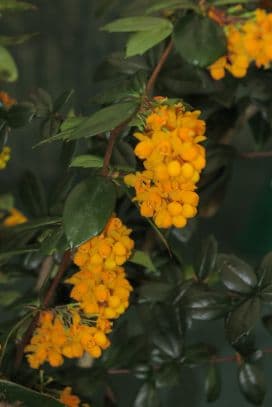
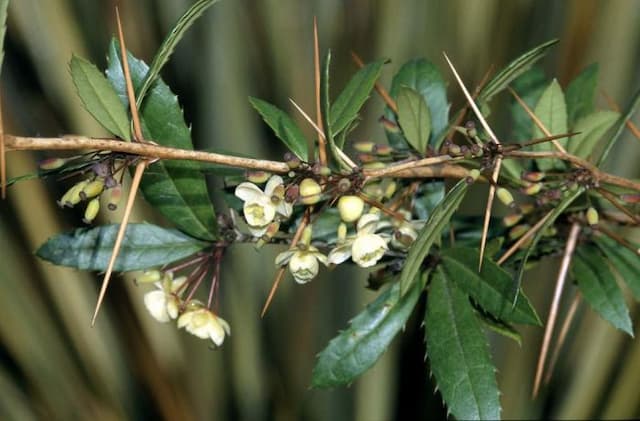
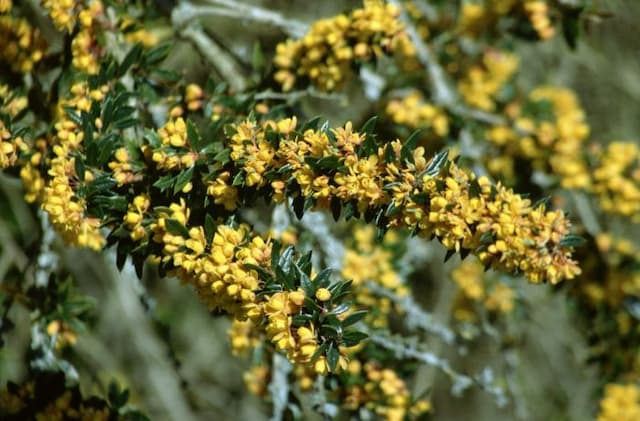
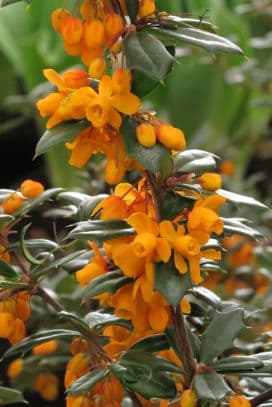
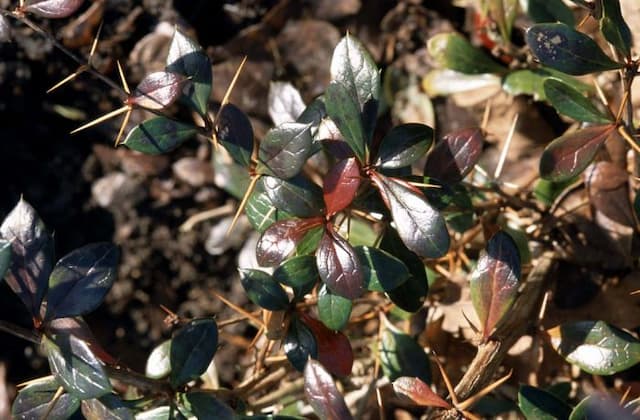


![Japanese barberry [Bonanza Gold]](/_next/image?url=https%3A%2F%2Fplants-admin.emdemapps.com%2Fimages%2Fplants%2F%2Fimages%2F604b5385e413f.png&w=640&q=75)
